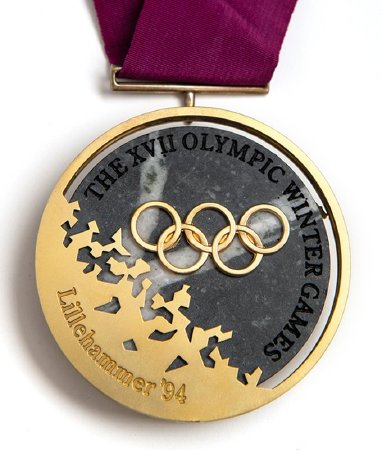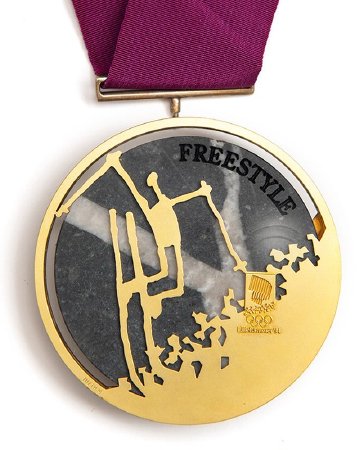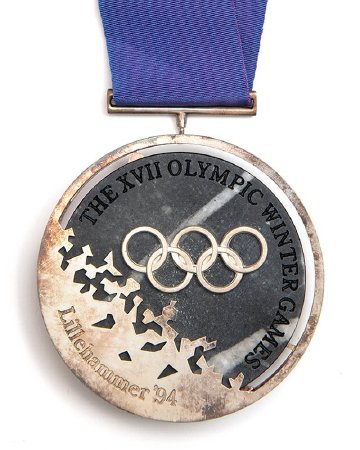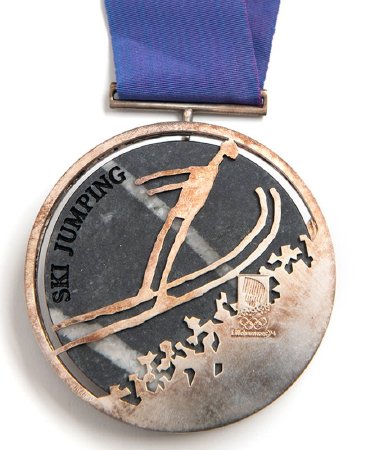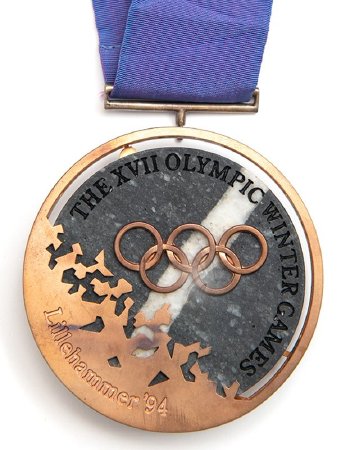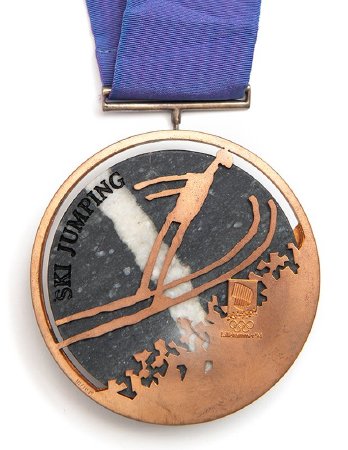Description:
Olympic Winter Games Lillehammer 1994 Medals
Front: Olympic rings in Gold and stylized ice crystal frame attached to Norwegian sparagmite granite with legend along rim, "The XVII Olympic Winter Games, Lillehammer '94."
Back: Sport pictogram with small Lillehammer emblem at right on stylized ice crystal.
Ribbon: Maroon and blue grosgrain ribbon replicating ice crystal motif.
Medal presented in circular wood case with grey outer bag
Designer: Ingjerd Hanevold
Mint: Th. Marthinsen, Tonsberg, Norway
Front: Olympic rings in Gold and stylized ice crystal frame attached to Norwegian sparagmite granite with legend along rim, "The XVII Olympic Winter Games, Lillehammer '94."
Back: Sport pictogram with small Lillehammer emblem at right on stylized ice crystal.
Ribbon: Maroon and blue grosgrain ribbon replicating ice crystal motif.
Medal presented in circular wood case with grey outer bag
Designer: Ingjerd Hanevold
Mint: Th. Marthinsen, Tonsberg, Norway
Title:
Lillehammer 1994
Fun fact(s):
Dan Jansen, one of the greatest sprint speedskaters of all time, competed in three previous Olympic Winter Games (1984-1992) before finally winning a gold medal and setting a world record at the same time in the men's 1,000-meter at the Lillehammer Winter Games.
More Info:
Designer Ingjerd Hanevold stated she designed the medals to be "humorous, sober and recognizable" and that their design "is Norwegian through and through." Sparagmite granite was the basic material. Hanevold said: "I tried to create something that reflects what Norwegians like and appreciate, i.e. nature. There is plenty of granite in our country, and it is beautiful in its simplicity. I think that, thanks to the other components - gold, silver and bronze - the medals are very stylish."
In 1986 the International Olympic Committee voted to change the schedule of the Olympic Games so Summer and Winter Games would be held in different years. To adjust to this new schedule, the Lillehammer Games were held in 1994, the only time that the winter Games have been staged two years apart.
In 1986 the International Olympic Committee voted to change the schedule of the Olympic Games so Summer and Winter Games would be held in different years. To adjust to this new schedule, the Lillehammer Games were held in 1994, the only time that the winter Games have been staged two years apart.
Click to Enlarge
